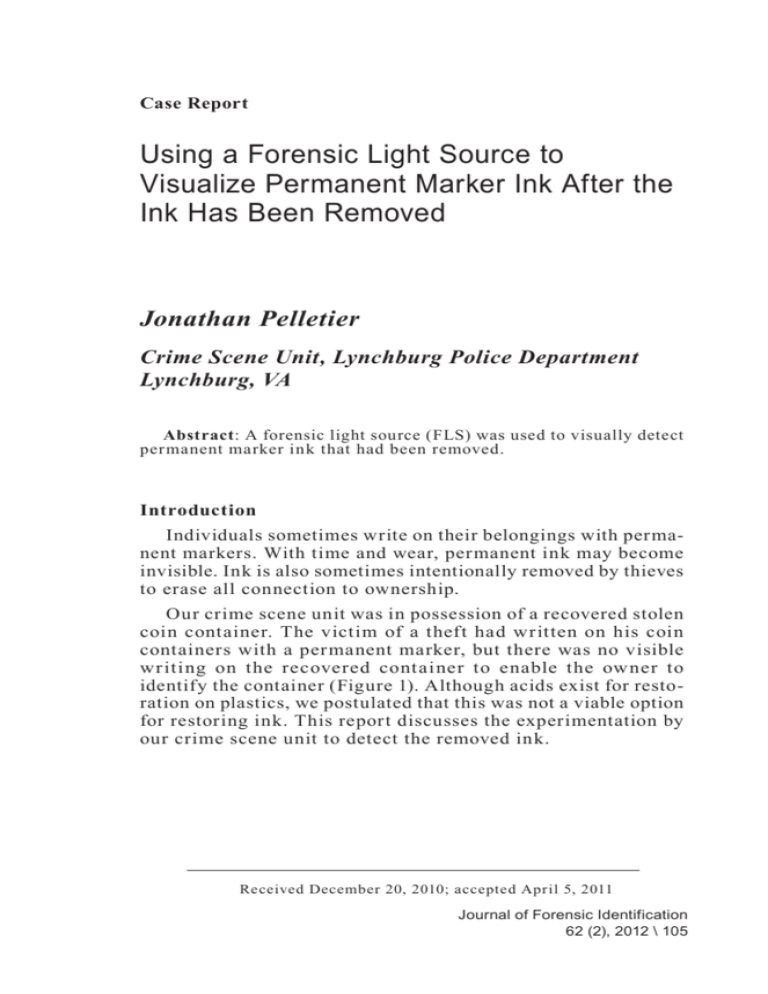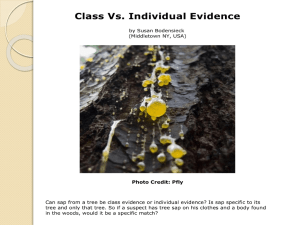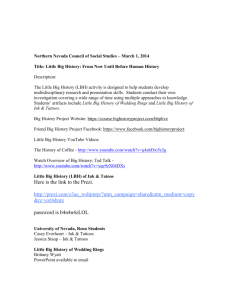Journal of Forensic Identification
advertisement

Case Report Using a Forensic Light Source to Visualize Permanent Marker Ink After the Ink Has Been Removed Jonathan Pelletier Crime Scene Unit, Lynchburg Police Department Lynchburg, VA Abstract: A forensic light source (FLS) was used to visually detect permanent marker ink that had been removed. Introduction Individuals sometimes write on their belongings with permanent markers. With time and wear, permanent ink may become invisible. Ink is also sometimes intentionally removed by thieves to erase all connection to ownership. Our crime scene unit was in possession of a recovered stolen coin container. The victim of a theft had written on his coin containers with a permanent marker, but there was no visible writing on the recovered container to enable the owner to identify the container (Figure 1). Although acids exist for restoration on plastics, we postulated that this was not a viable option for restoring ink. This report discusses the experimentation by our crime scene unit to detect the removed ink. Received December 20, 2010; accepted April 5, 2011 Journal of Forensic Identification 62 (2), 2012 \ 105 Materials and Method I imported high-resolution scans and digital photographs into Photoshop CS3, where applications proved fruitless in visualizing any writing. However, these attempts did yield an interesting result: an obvious wear area with scratches was revealed. All additional experimentation focused on the abrasive area as the most likely area to visualize something that might have been scratched off. Varying intensity of oblique light (10 lumens to 500 lumens) from each side, the infrared spectr um (>700 nanometers), and various IR filters did not help. While using a Crimescope forensic light source (CS-16-500, SPEX, Edison, NJ) and its various combinations of filter goggles and wavelengths, I discovered that the wavelength of 415 nm and orange barrier goggles revealed some written numbers: “1889P”. (Only after reporting the results of the FLS experiment was I informed that we were looking for “1889”.) I recorded the visualized numbers with a pocket camera (Sony DSC P200), holding the orange goggles over the lens. Next, I photographed the same area with the Nikon D-80 using a Promaster YA2 orange filter (Figure 2). After I applied adjustments in Photoshop to clarify what was already visible in the digital image, the figures became even more apparent (Figure 3). In December of 2010, a felony conviction of grand larceny [1] directly resulted from the application of our forensic light source examination. In November of 2009, after “restoring the date”, I had some questions. Were the results achieved through using the forensic light source (FLS) because of the marker type, color of ink, composite of the coin container, or the color of the plastic (white)? Would the FLS experiment work on other surfaces? Without elaborate experimentation, I used permanent markers of two different brands (Avery and Sharpie) and four different colors (black, brown, green, and red) to make numbers on the stainless steel portion of a pocket knife. After six months, the numbers were completely worn off and yet were visible using the same FLS settings. Thirteen months after the ink was applied, after daily wear, no numbers could be visualized on the knife’s surface, even with the use of the FLS. Formal experimentation is necessary to draw more specific conclusions. Journal of Forensic Identification 106 / 62 (2), 2012 Figure 1 White pastic silver dollar coin container with permanent marker ink completely removed. Figure 2 Same plastic silver dollar coin container. The date “1889P” was visualized under 415 nm using the Crimescope CS-16-500 and a Promaster orange filter. Figure 3 Digital image of the same container using monochrome within the Channel Mixer and adjusting the Levels reveals 1889. Journal of Forensic Identification 62 (2), 2012 \ 107 Conclusion In this case, a suspect had completely removed numbers made in permanent ink, thereby removing the ink link to ownership. Visualizing the numbers through the use of an FLS provided the visual evidence for the victim to identify the stolen coin tube. Acknowledgment I would like to thank Detective Todd Barley for presenting this challenging evidence to our crime scene unit. For further information please contact: Detective Jonathan Pelletier, IAI-CSCSA Lynchburg Police Department - Crime Scene Unit 905 Court Street Lynchburg, VA 24504 Jonathan.pelletier@lynchburgva.gov References 1. State of Virginia v James Joseph Douros, Case No. 111659. Journal of Forensic Identification 108 / 62 (2), 2012








